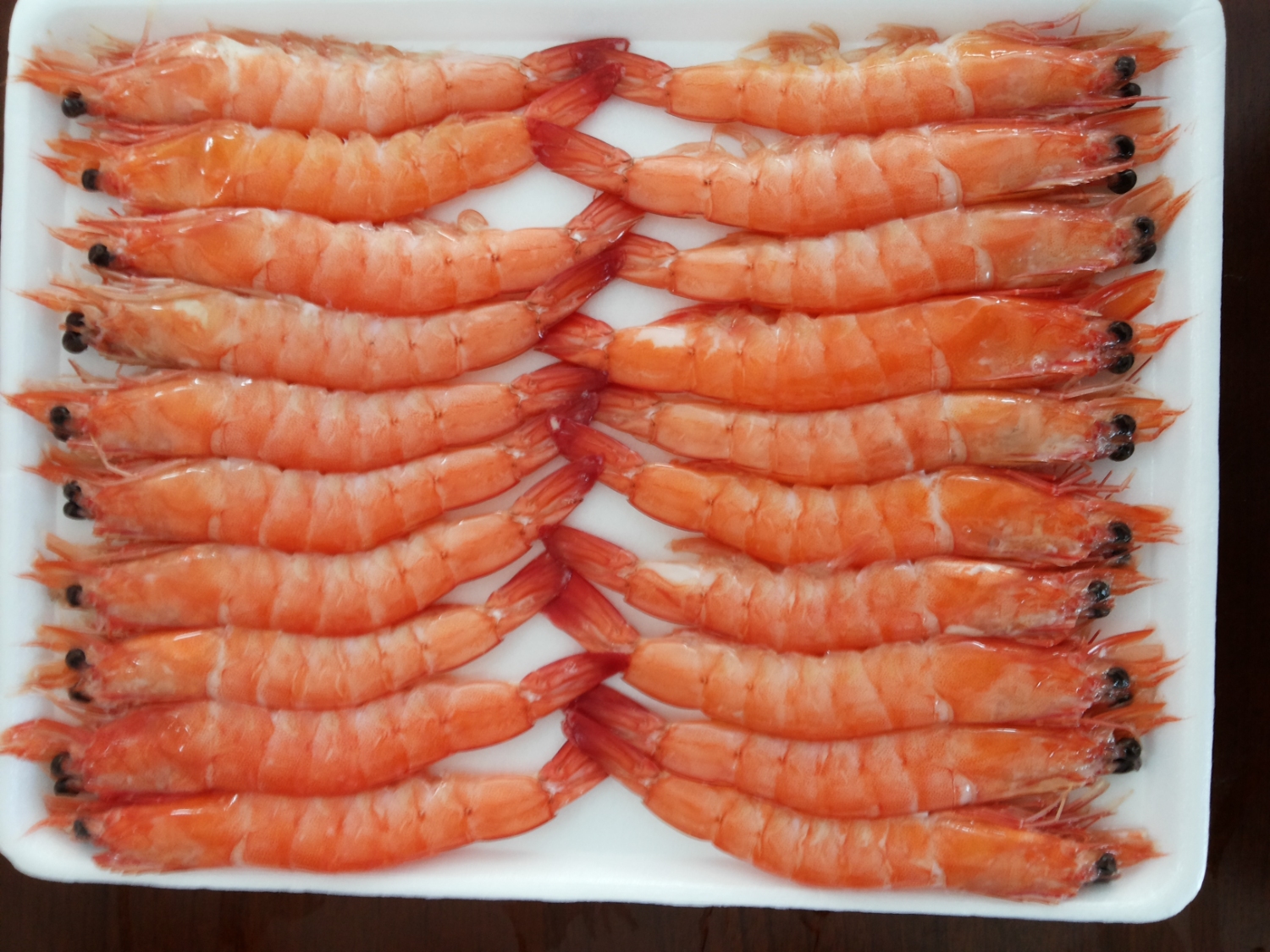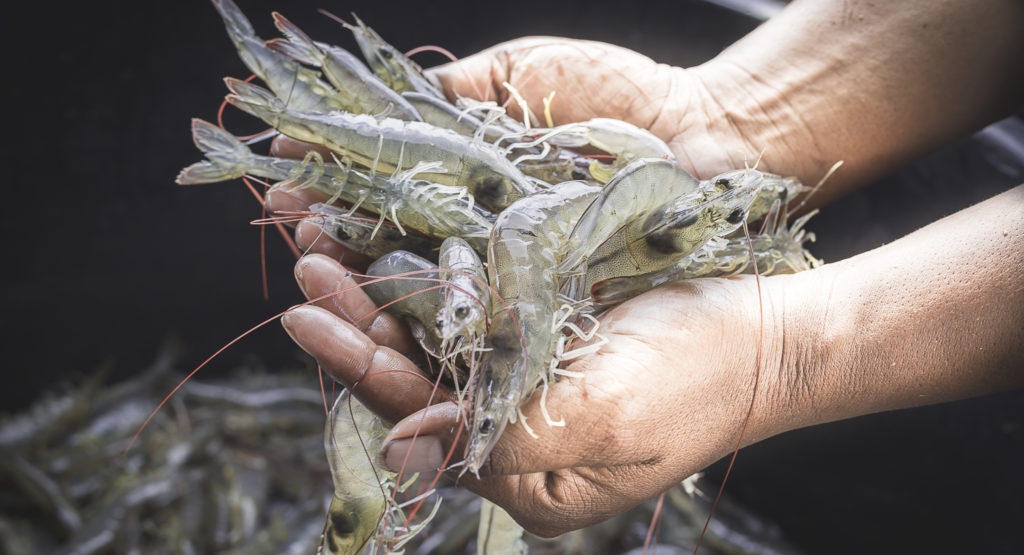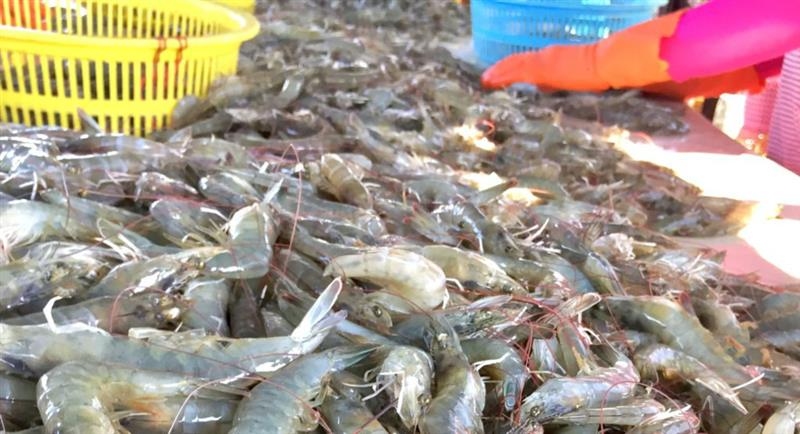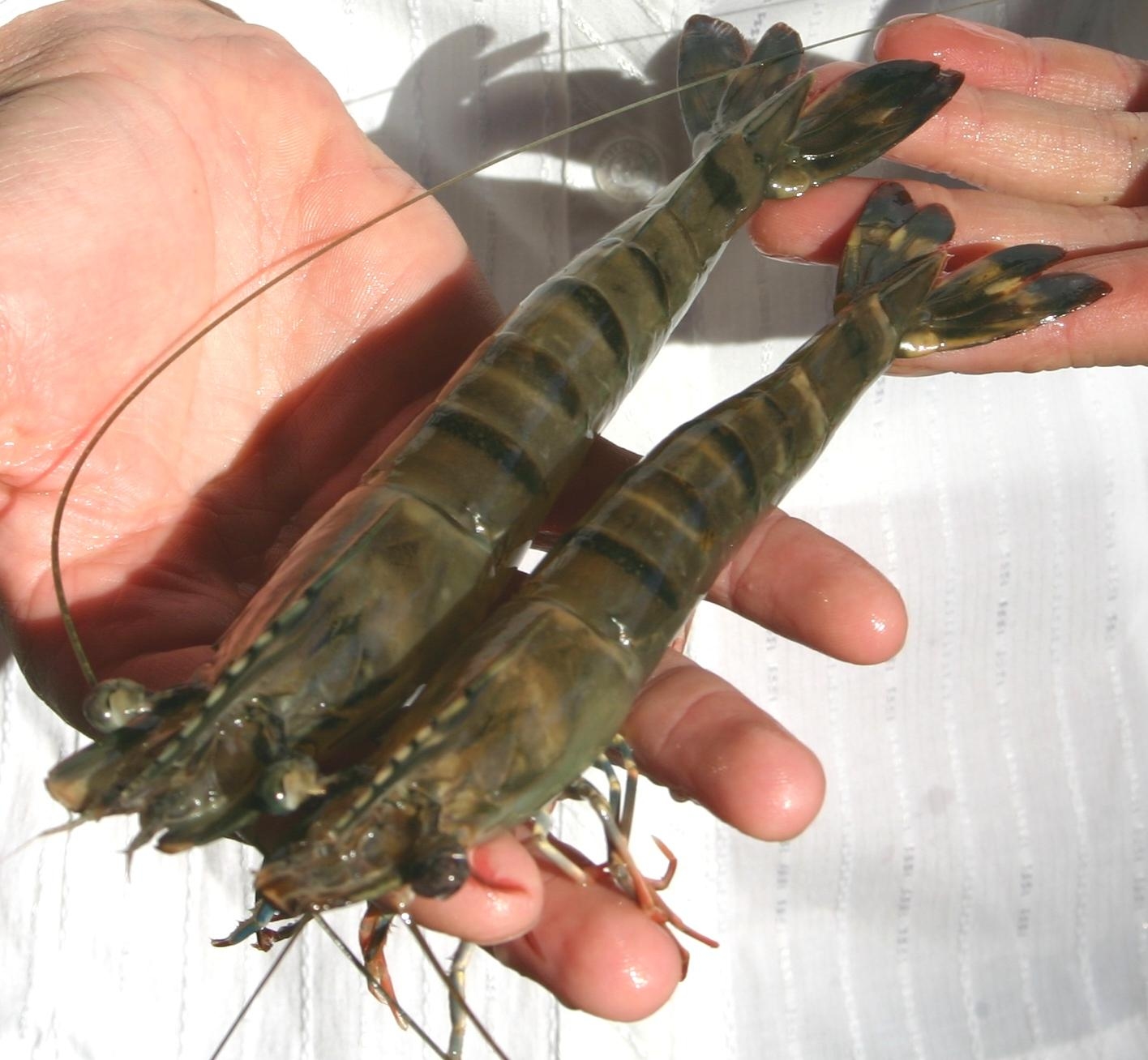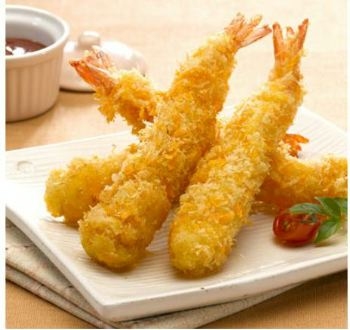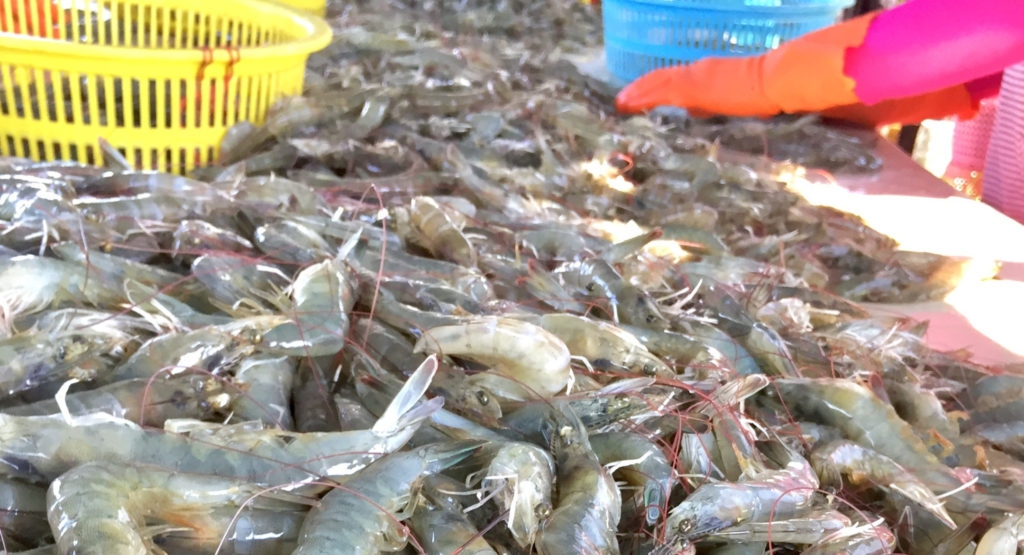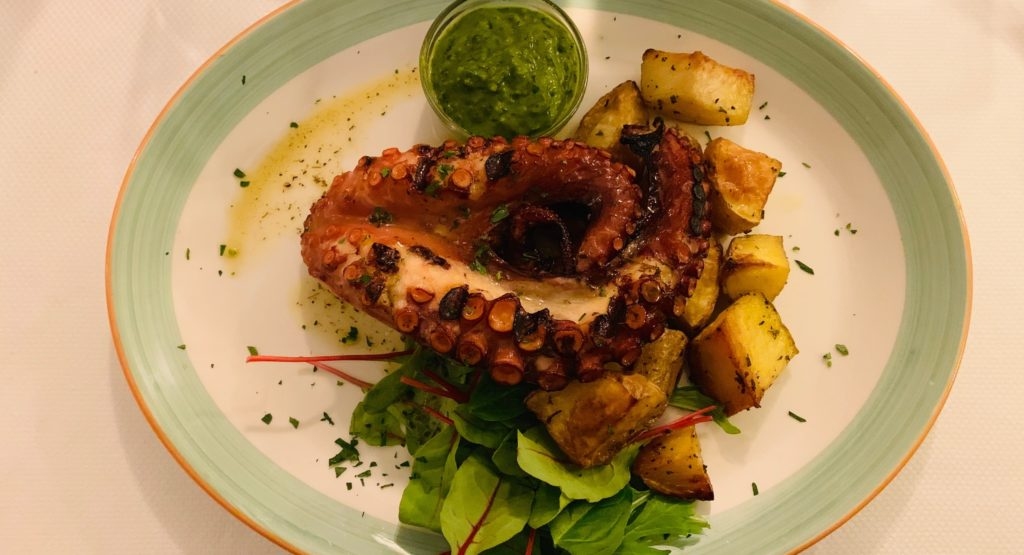
Shrimp demand may be dampened by recurrence of COVID-19
Despite lower demand from the hotel, restaurant and catering (HORECA) sector, shrimp imports increased in many markets during the first three quarters in 2020 due to record low prices. Retail demand for fresh and frozen shrimp increased worldwide.

Supply
In most farmed shrimp producing countries, the 2020 annual production data is yet to be announced.
However, preliminary news and industry analysis have suggested moderate increases in production in Ecuador, Indonesia, and Viet Nam, but reduced harvests in India, Thailand, Malaysia and Bangladesh compared with 2019. Production drops were possibly much higher in China than in other countries in Asia.
Since November 2020, shrimp farming in Asia entered the low production season period covering the northeast region of India, Viet Nam, Thailand, Myanmar, and Bangladesh. Ex-farm prices of shrimp bottomed out during the fourth quarter of 2020 and have firmed up since, especially for large and medium sized shrimp.
The National Chamber of Aquaculture of Ecuador indicated a 7-8 percent rise in the 2020 production of farmed shrimp compared with 650 000 tonnes harvested in 2019.
Supply of sea-caught shrimp in Argentina was lower in 2020 compared to 2019 due to the late start of the catch season, reduced biomass, and slower processing operations amidst COVID-19 challenges in the country.
International trade
During the first nine months of 2020, shrimp exports increased from Ecuador and Indonesia but declined from India, Viet Nam, Thailand, China and Argentina compared to the same period in 2019.
Ecuador retained its position as the top exporter in in quantity despite record low export prices, rises in logistical costs and problems, including China’s transitory import bans on selected export processors. Exports increased to its top three markets: China (+7.9 percent), United States of America (+50 percent) and the European Union (+20 percent).
Indonesia reported a significant rise in exports (+20 percent) as supplies increased by 27.8 percent to the US market and Asian markets of China (+65 percent), Malaysia (+42 percent), Singapore (+15 percent), and the Republic of Korea (+12 percent).
India lost market share due to lower production, and strong competition from Ecuador in both supply and prices. Among the top six destinations, exports declined to United States of America, China and European Union markets but increased to Japan (+8 percent), Viet Nam (+4 percent) and Canada(+17 percent).
There were also setbacks in Argentina’s shrimp exports during the review period (-23.3 percent)due to lower catches. Exports declined to the top markets of the European Union and China by 30 percent each.
Notably, imports in the top the ten markets (United States of America, China, European Union, Japan, Republic of Korea, Viet Nam, Taiwan (Province of China), Canada, Russian Federation and Hong Kong SAR totaled 2 million tonnes during this period, an increase of 8.6 percent compared to the same period in 2019. Despite a weaker demand trend from the HORECA sector worldwide, shrimp imports grew in the two largest single markets (United States of America and China) during the first nine months of 2020. In the European Union, increased supplies from Ecuador and Greenland largely compensated for the declines in supplies from Viet Nam, India and Argentina.
In the northern European markets, demand for shrimp improved during the summer months with better sales in the HORECA sector as more people opted to dine-out during the holiday months.
During the first nine months of 2020, shrimp imports in the European Union were marginally lower at 568 600 tonnes (-2 percent) in comparison with the same period in 2019. Among the top European markets, imports declined in Spain (-9 percent to 101 570 tonnes), the Netherlands (-1 percent to 57 590 tonnes) but increased in France (+7 percent to 85 763 tonnes), Denmark (+13 percent to 71 050 tonnes) and Germany (+8.6 percent to 46 700 tonnes).
The extra-EU imports of shrimp in the market were 415 115 tonnes (-2 percent) during this period.
From the top sources, imports increased by 20 percent each from Ecuador and Greenland which largely offset the supply shortfalls from Viet Nam, India and Argentina.
In Spain, the largest European shrimp import market, Ecuador overtook Argentina as the main supplier during the first nine months of 2020 with a 33 percent rise in exports at 37 240 tonnes. The unit value of Ecuadorian shrimp in the Spanish market declined by 12 percent, reflecting the very aggressive Ecuadorian sales strategy.
There were lower imports of processed shrimp (-7 percent to 75 325 tonnes) from non-EU sources during this period upsetting exports from Viet Nam, Indonesia and Thailand to the European Union.
Outside the European Union, imports in the United Kingdom of Great Britain and Northern Ireland were 7 percent lower at 53 000 tonnes during this period.
Retail sales of seafood have increased dramatically in the United States of America during the COVID-19 crisis, benefitting shrimp trade in the world’s single largest import market.
The HORECA shutdown during early 2020 resulted in business shifting towards take-out and delivery services, combined with a retail and e-commerce boost. When authorities started gradually reopening restaurants (albeit at reduced capacities), activity and market prices continued to rebound.
Wholesale shrimp prices held up remarkably well during the summer and autumn seasons following reasonable demand from retail and foodservice sectors.
US imports increased year-on-year during the first nine months of 2020, making cumulative imports 7.8 percent higher at 535 134 tonnes during the first nine months of 2020 compared to the same period in 2019. Supplies from Ecuador were high (+49 percent) following Ecuador’s loss of market share in China due to COVID-19 restrictions.
The share of processed/value-added shrimp increased by 23 percent (124 255 tonnes) in the US market during the review period of 2020 compared with 20.6 percent in the 2019 corresponding period. Viet Nam, Thailand, and Indonesia were the main suppliers.
While supplies of domestically grown shrimp declined in 2020 with rising prices, demand for imported shrimp increased in the Chinese market. Cumulative imports during the first nine months of 2020 were 4.8 percent higher year-on-year reaching 500 000 tonnes. Imports of the popular Ecuadorean shrimp increased by 23.3 percent, while farmed shrimp imports also increased from Indonesia, Malaysia, and Iran during this period. In addition, imports of sea-caught shrimp increased from Argentina, Canada, Greenland, Norway, and Pakistan.
Consumers in China, particularly in urban areas, are increasingly turning to online platforms to make their purchases of food, including seafood. Due to COVID-19 lockdowns, many consumers have opted for home cooking and healthy eating, with e-commerce gaining in popularity over traditional in-person purchases, both in wholesale and retail trade. Changes in buying patterns have also resulted in increased household demand for frozen shrimp. Meanwhile China’s domestic tourism and restaurant sales have improved since the week-long mid-autumn national holiday in October 2020.
The importance of the Japanese market in global shrimp trade is waning along with falling imports of shrimp over the last two decades. Consumer demand for this product group remains meager in the market. Demand for shrimp in the catering trade declined significantly. Domestic consumption of shrimp also waned in Japan during the pandemic. Subsequently imports were record low at 147 100 tonnes during the first nine months of 2020 (-4.7 percent year–on-year). Imports of both raw and processed shrimp declined during this period by 3.2 percent and 6.6 percent respectively.
With the exception of China, overall shrimp demand continues to be low in the Asia/Pacific regional market. The decline in restaurant sales has largely affected overall demand, while retail prices of shrimp remains high in most markets in East Asia.
The important import markets, namely Republic of Korea, Taiwan (Province of China), Singapore, and Malaysia, imported less shrimp during the review period. Furthermore, the political turmoil in Hong Kong SAR has taken a toll on overall seafood trade.
The weak demand trend also continued in the Gulf Cooperation Council (GCC) markets in the Middle East with falling imports of shrimp.
Price
Even with a general low supply situation, prices of frozen farmed shrimp endured a weaker trend during the first three quarters of 2020. During April-September 2020, export prices of Ecuadorean vannamei shrimp were lowest in international trade compared with the export prices of Asian vannamei. From October 2020 ex-farm prices of vannamei shrimp started to bottom out, mostly for large and medium sizes, while prices of small sizes have yet to improve. Fresh shrimp prices in Asia remained strong and have increased since December 2020.
For sea-caught shrimp, Argentinean shrimp recorded a significant price rise at origin and in international trade following low landings and good Christmas demand.
Outlook
Unfortunately, 2021 is overshadowed again by COVID-19. With increasing movement restrictions in North America, Europe, Asia and elsewhere, this year’s supply and demand forecast remain opaque for the time being.
In East Asia harvests are expected to increase in February to cater for the demand during the Lunar New Year celebration. However, the upcoming Lunar New Year Celebration in East Asia will be less vibrant than in previous years. This will have a negative impact on overall seafood consumption including shrimp.
Source: FAO
Other news
- A recovery for the shrimp market? 17/04/2024
- Shrimp market: Fear of inflation and declining demand 22/10/2022
- Summer demand remains strong in the United States of America and Europe 08/11/2021
- Global supply chains are being battered by fresh COVID surges 18/08/2021
- Animal Health and Welfare in Aquaculture 17/08/2021
- Pangasius Imports Outpacing Tilapia 10/08/2021
- Growth in India's Shrimp Production and Exports 08/08/2021
- Decline in shrimp exports to China makes shrimps cheaper in India for domestic market 03/08/2021
- Rabobank sees plenty of positives for both shrimp and salmon sectors 29/07/2021
- Asia’s Shrimp Connoisseurs: Japan, Taiwan And South Korea 02/07/2021

